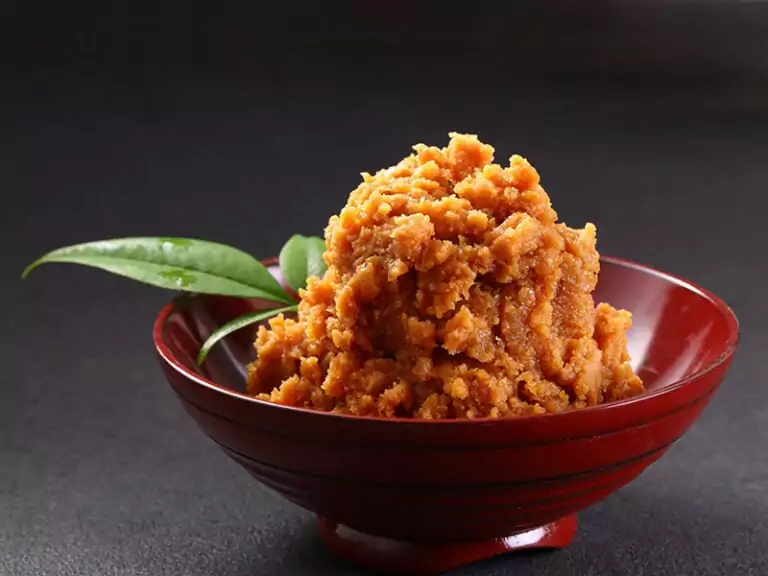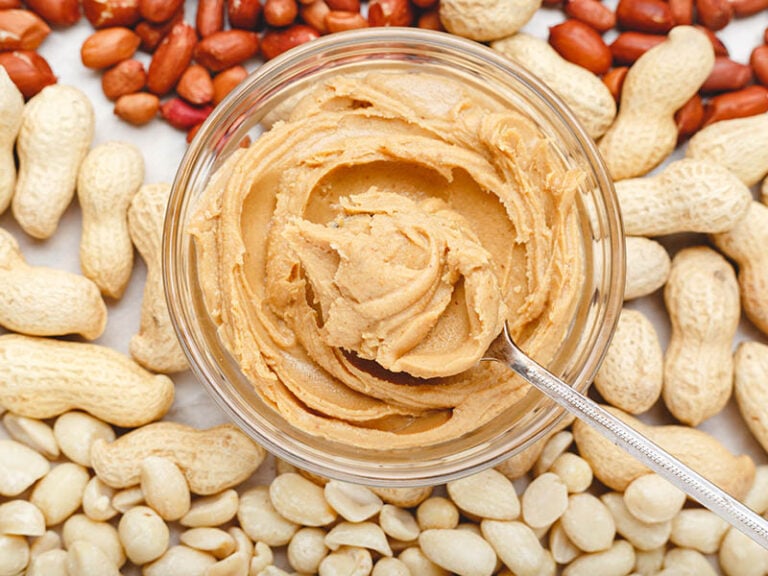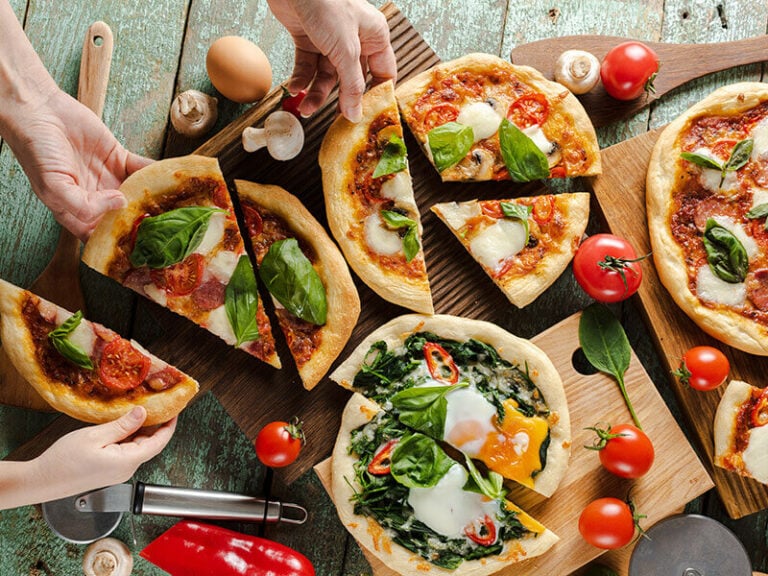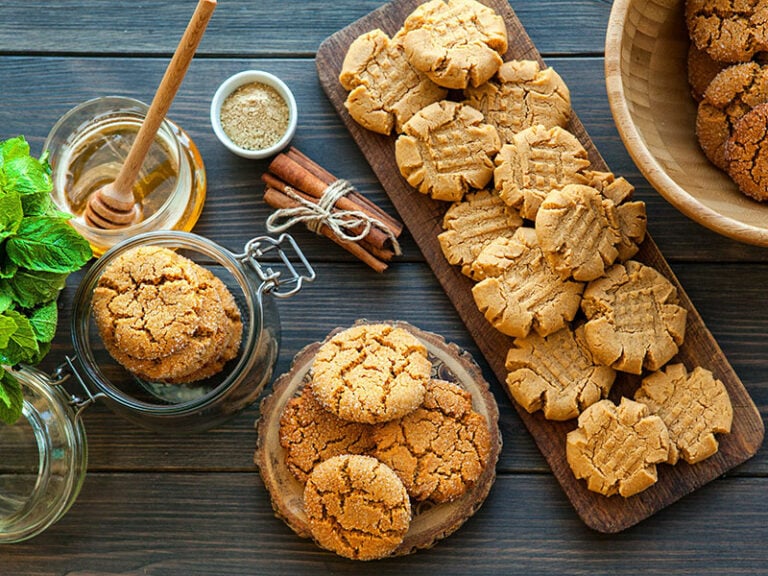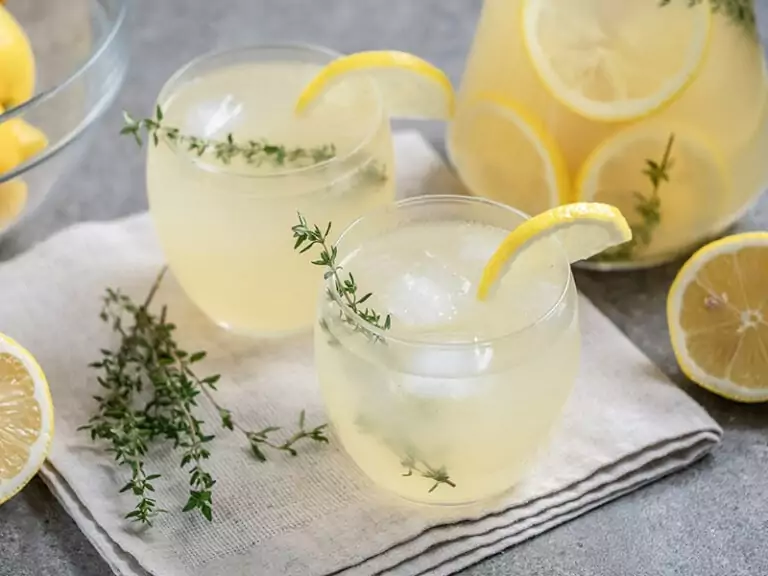What is a charcuterie board? For true food lovers, your pride is trying new foods, so you must have come across this dish multiple times at farm-to-table dining destinations. You might even have tasted it at some social gatherings because this tray is a popular item for parties.
However, if you still have no clues about this dish, stay here because I have the answer you need. Along this journey, you will dive deep into this traditional French appetizer, a growing trend in modern-fine restaurants in the US.
In this post, you will get a closer look into the history behind this famous staple, its required ingredients, how to duplicate a great board for your party, and more. Enough time for chit-chat; let the fun begin.
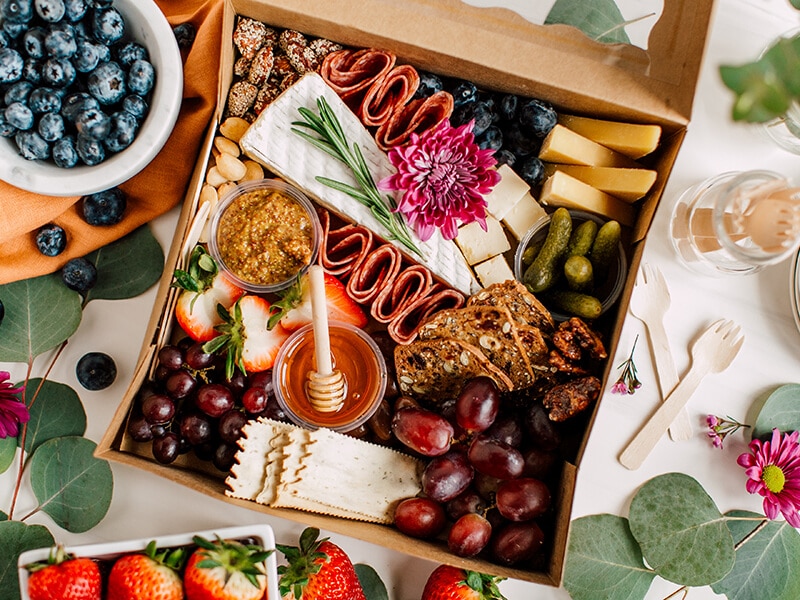
Charcuterie 101 – Unveil This Traditional French Food
First and foremost, let’s meet the main star of the dish: charcuterie, or cured meat, which is also the name of this dish. This special meat has a deep root in French and an interesting history. Are you ready to find out?
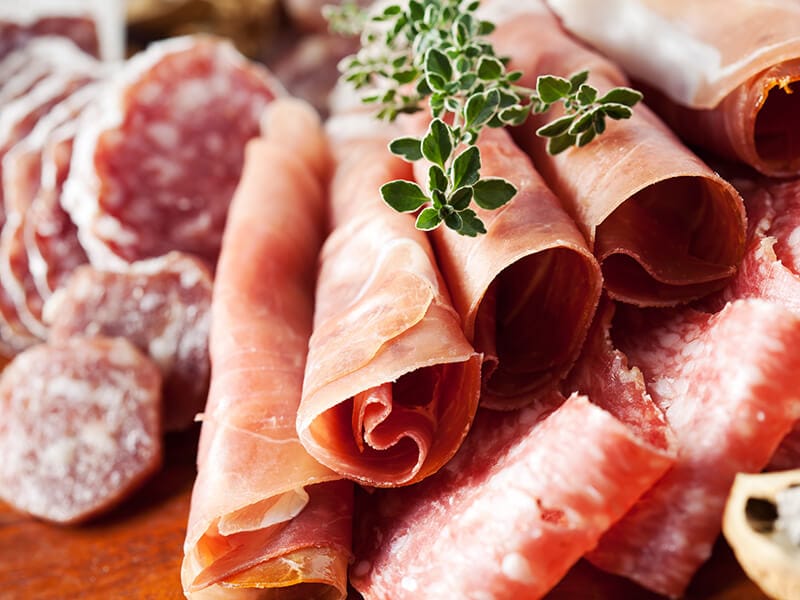
A Close Cut To Charcuterie Origin
First, let’s face the most complex task: how do you pronounce charcuterie? For a more authentic sound, learn how the French say it: “shar-coo-tree”. Or just stick with the English pronunciation: “shar-coo-tuh-ree”.
Originating in the 15th century, the word “charcuterie” is a combination of two French words: “chair” for “flesh” and “cuit” for “cooked”. In the culinary lexicon of French, it’s the art of preserving meat products. Simpler speaking, it was a flowery word for cured meat.
Before the invention of refrigeration, salting and smoking were essential in meat preservation(1). This word was also a sign of a lower-status peasantry since people from this level had to find ways to extend the meat’s shelf life.
Europe, in general, and French, in particular, has been home to charcuterie-style shops for centuries. However, this class-act culinary art has been making waves in America, thanks to the rise of social media and a change in culinary trends.
Are you sure you pronounced the word “charcuterie” correctly? Find out here!
A Brief Guide To Different Types of Charcuterie
For today’s foodie, this French word is the umbrella term for processed meat products, which contain numerous varieties, from cured meats and sausage to pate. Below are some familiar types of charcuterie that people often display on this appetizer stray.
Whole Muscle
As its name suggests, it’s a piece of cured meat from an animal’s entire muscle. The animal parts used for this charcuterie are the belly, loin, shoulder, or legs. Prosciutto, Jamon Serrano, Jamon Iberico, and Italian-style speck all fall under this category.
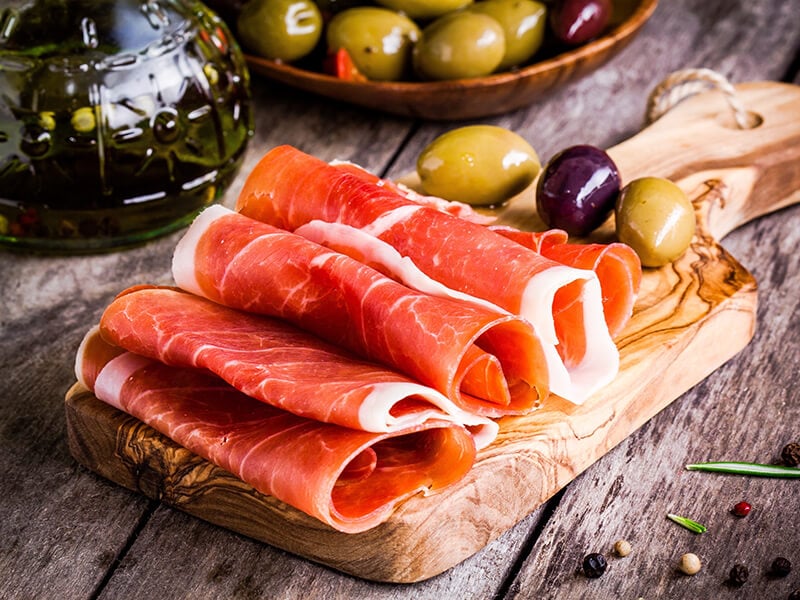
Dry Cured
Dry curing is a standard technique in preparing pepperoni, finocchiona, and soppressata. To my surprise, though it’s a sausage, salami is also a member of this category. The dry curing process combines salt curing, air drying, and even smoking to eliminate bacteria.
Learn how to make a salami rose to add more prettiness to your charcuterie board here.
Encased Sausages
Unlike other varieties, encased sausages don’t go through any heating or drying process, so you have to cook them before use. If you are a fan of hot dogs, bratwurst, and andouille, don’t be surprised to see these sausages are also charcuterie.
During the making process, manufacturers will mix the meat with organs and season the mixture with salt to make these products. Then, they will stuff the blend into a cleaned intestinal lining.
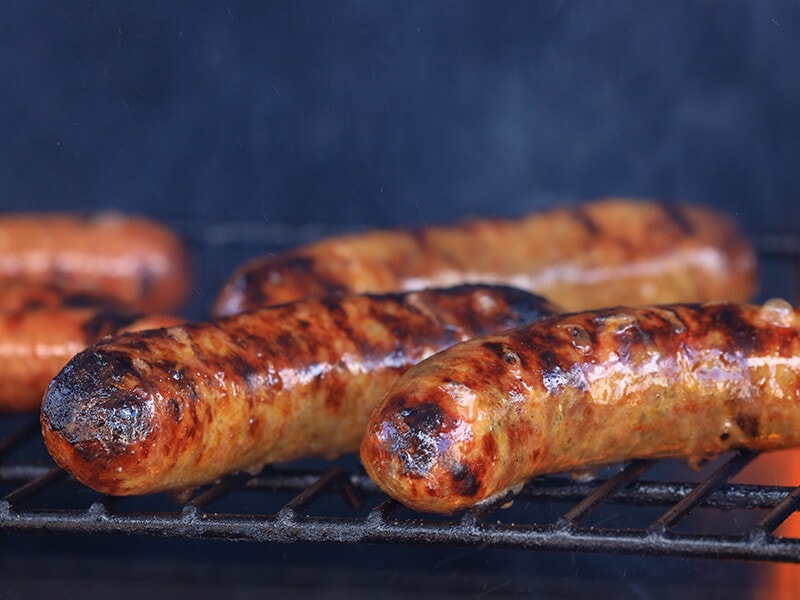
Cooked
The name says it all. What products of this category have in common is that all underwent the brining process before being cooked. You’ll have prosciutto, cotto, ham, pastrami, and several deli types of meat in this category.
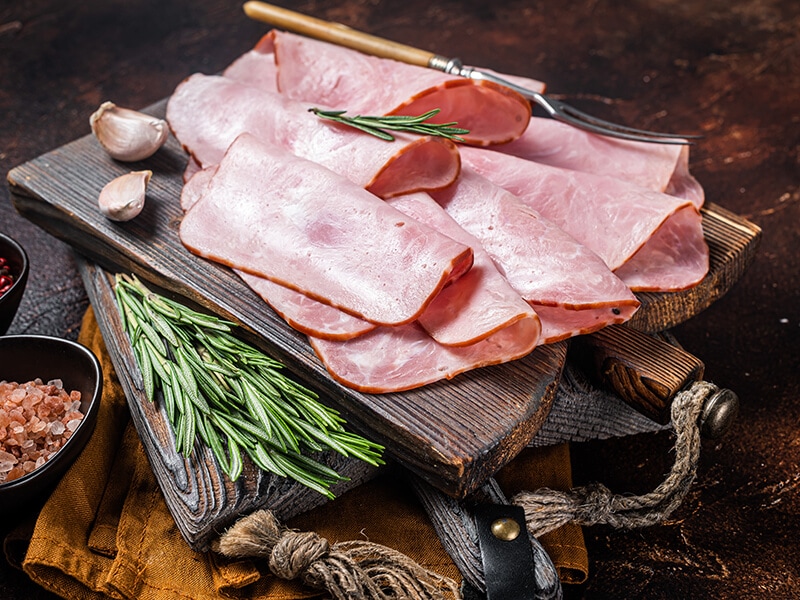
Pate
Pate is a special type of charcuterie. Unlike other varieties, it has a spreadable texture and can be made from different meat products, such as the liver. Pate de Campagne is the most common on the shelves, a product made from fatty pork, liver, spices, and herbs.
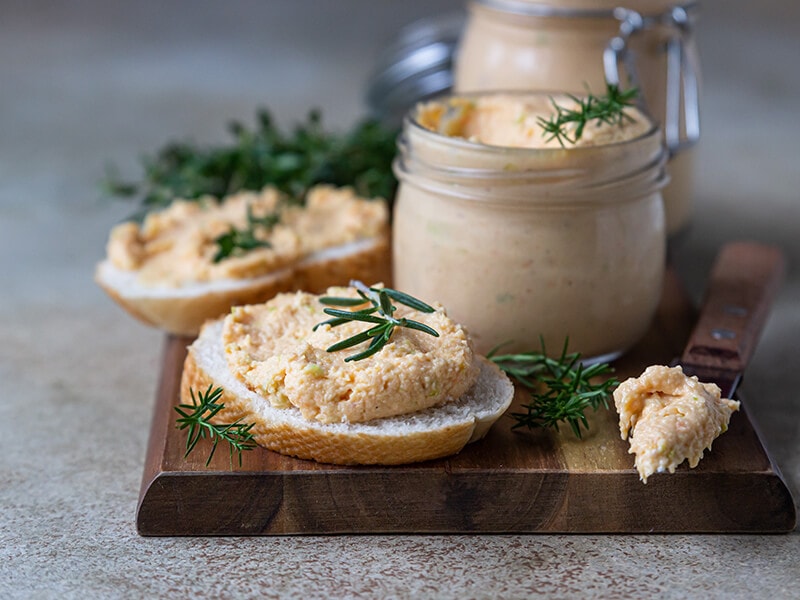
What Is A Charcuterie Board?
In modern culinary, the term “charcuterie board” refers to a style of food presentation. Over time, it has been synonymous with a fabulous board dish with cured meat and its accompaniments.
A Simple Definition Of Charcuterie Board
At its most basic, a charcuterie board is a fusion of various ingredients on the same tray. As such, it can be a collection of USAD’s five basic food groups, ranging from fruits and grains to proteins(2).
In particular, popular picks for protein and dairy foods are cured meat and cheese, along with the supporting cast from different savory and sweet extras. This mix-and-match turns simple dishes into unique experiences.
The beauty of this culinary art is its flexibility. You’re free to scale portions, ups or downs, based on the number of guests. Even better, any modification about the ingredients is possible so guests with all dietary restrictions can have a bite.
As shareable food is a trend in the US, no wonders that charcuterie boards have become a new hit. This appetizer is best consumed in a group, allowing people to try different food at once. Flavorful and diverse, it’s a playground for you to mix and match limitless flavor combinations.
However, whatever the combination is, remember that presentation is the key, so making an artful arrangement for your board is essential. Keep an eye on the colors and textures of all items to create a platter that’s both aesthetically pleasing and yummy.
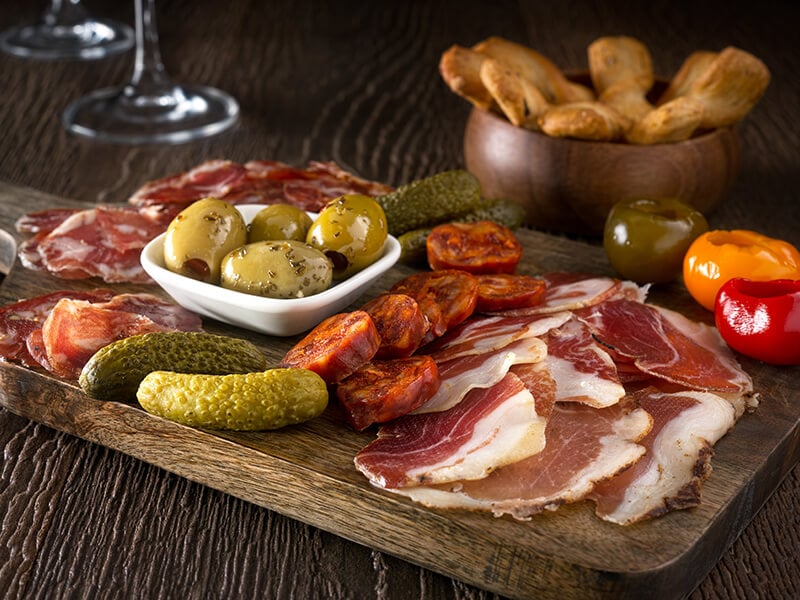
Things You Need To Know About Picking The Board!
Regarding charcuterie boards, presentation always comes first. Apart from food arrangement, the board you choose is also essential. An ordinary plate would be fine, but a board is much more visually satisfying.
Shape
The easiest option is rectangular boards. There are no limitations to their shape and space, so feel free to unleash your creativity with food layering. Next in line is the classic round platter. You’ll find no trouble with the plate presentation, but the food portion may be tricky.
If this is your first time making a charcuterie board, play safe with the rectangular and round shapes. However, if you are confident enough, experiment with harder forms, such as square, oval, or teardrop, and wow your guests.
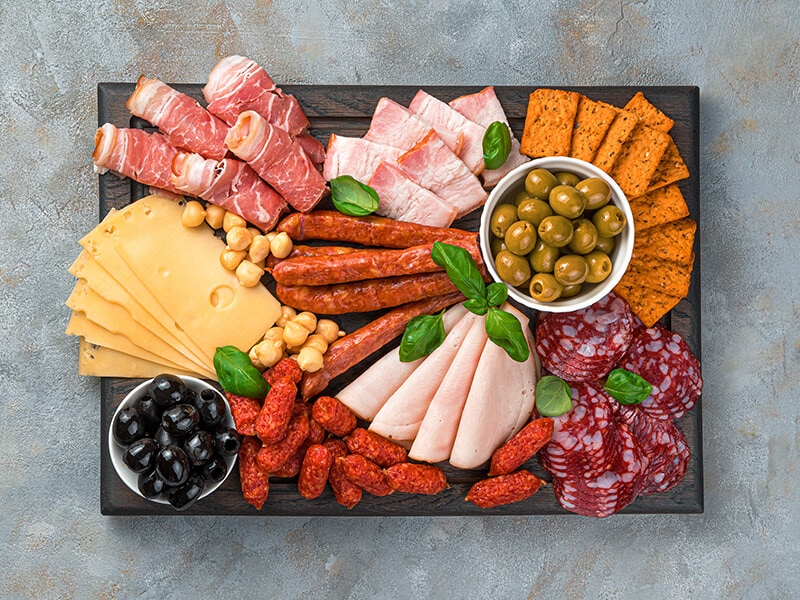
Size
The classic 9 x 13 inches are the average size for a charcuterie snack that can accommodate one to three people. Or, if you serve a bigger crowd, a giant board of around 20 inches is an excellent fit for your parties.
There are even bigger ones on the market, so you should consult with buyers first. But remember that the larger the board is, the more money you’ll spend to fill the gap. To keep your budget in check, take the smaller option if possible.
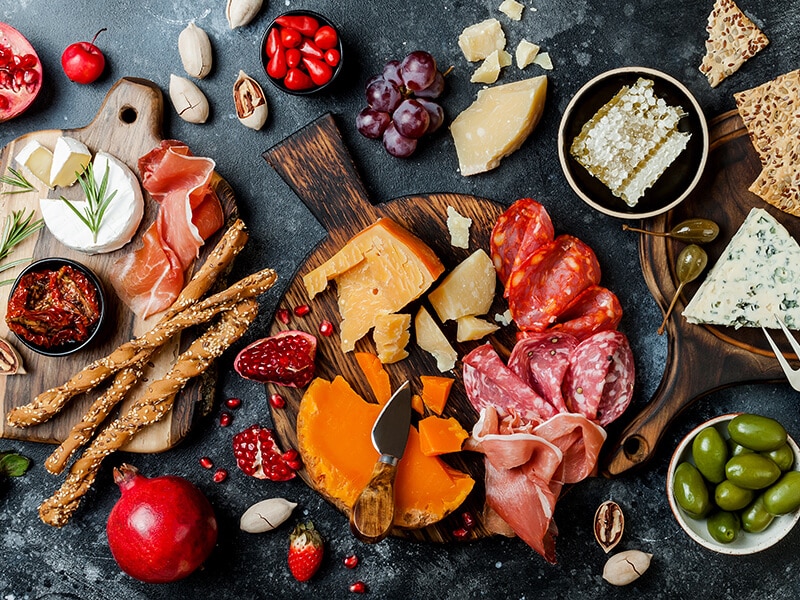
Material
This criterion is also a consideration for not only presentation but also weight. Wood and marble are favorable choices, but melamine breadboards got the best of both worlds. Your wallet also benefits since they are in the middle of the price range.
Since these boards are lighter than most varieties, they are easier to carry around with a bunch of toppings. At the same time, they also get bonus presentation points for the rustic look. Plus, melamine boards are unbreakable, so they are ideal for children and outdoor use.
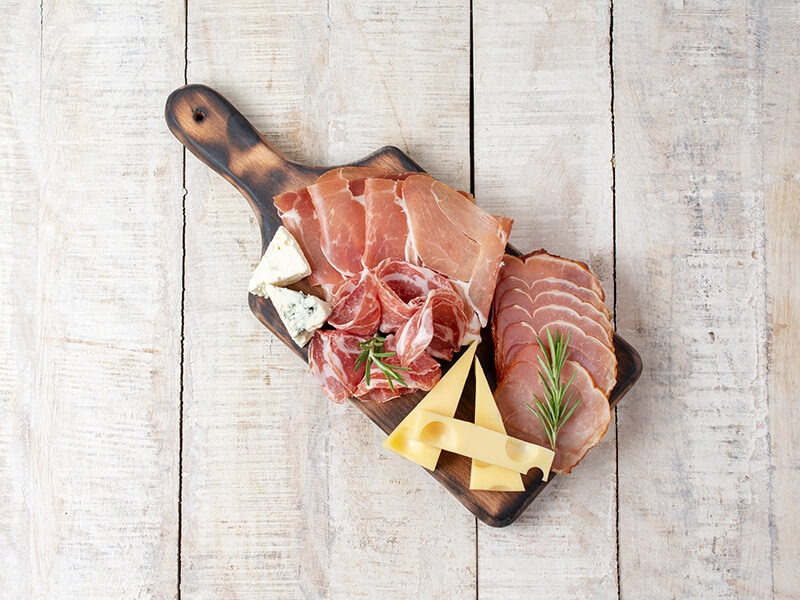
What Goes On A Mouth-Watering Charcuterie Board?
As previously mentioned, a charcuterie board combines different textures and flavors. Around the board are various items, from cheese to meat and more, but that doesn’t mean anything is acceptable.
Except for the vegan versions, all the items have to play along with cured meat, the dish’s centerpiece. While cheese and crackers are the classic moves, you’ll need additional ingredients to fill the space. So that’s the job of the extras!
Give your platter a touch of savory or sweet sidekicks or both, according to your liking. Popular savory foods include nuts, seasoned vegetables, dips, and cold veggies. Meanwhile, sweet accompaniments can be fresh & dried fruit, sweet spread, and chocolate.
As an appetizer, a standard charcuterie board should provide at least 2 – 3 ounces of meat and 3 ounces of cheese per person. Multiply this number based on the size of your board and the scale of your party. There are no limitations for crackers, so add as much as you like.
Also, be generous with the additions because the point of a charcuterie board is to give out diverse flavor combos in each bite. However, when you want it to be the main dish, be humble with the added elements and focus more on cured meat.
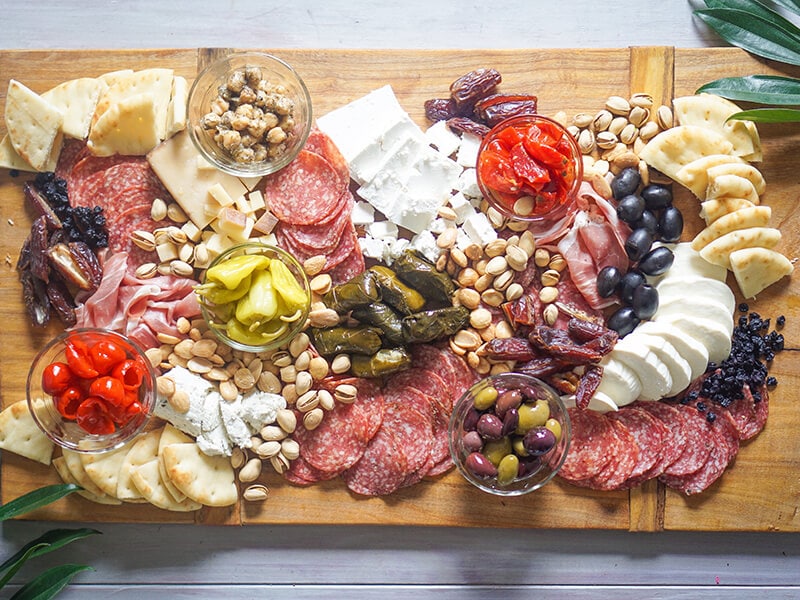
Traditional Styles Of Charcuterie Boards
As charcuterie boards receive worldwide recognition, there are more and more variations around. But it wasn’t a coincidence that the classics stood the test of time. Follow the traditional approaches below if you haven’t figured out a concept for your cured meat platters.
French
French is the charcuterie’s birthplace, so they will have the most authentic recipe. The traditional French board consists of dry cured meats, salami, and offal charcuterie (cured organs of butchered animals). The French love offal, so don’t be surprised to see cured offal on the menu.
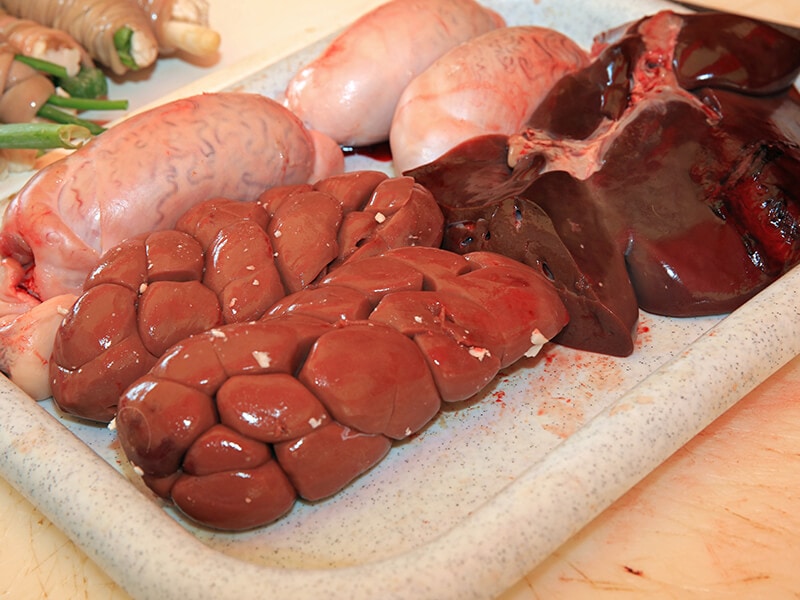
Italian
The Italian version is a bit different. Apart from the dry-cured meat and cheese, the general formula contains some green power from preserved vegetables and grapes. There will be slight adjustments from region to region, but the focus is still on cured meat and cheese.
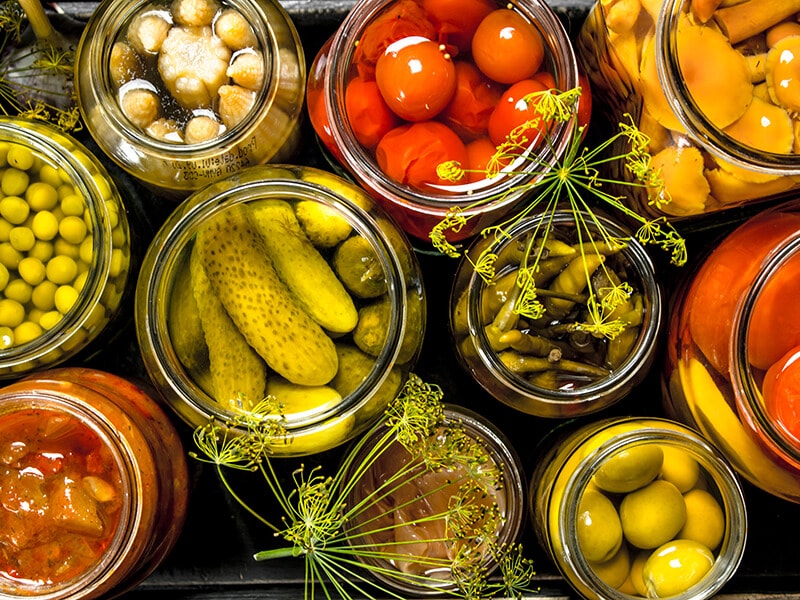
Modern
This freestyle approach opens doors for any modification. You’re welcome to combine any combo of flavors and textures in one place, whether cured meat is present. Therefore, vegans can enjoy the fun with a plant-based snack board. Below are some prominent examples:
Pickles And Spreads
Due to their unique flavors, pickles can be a leading star on the tray. They are perfect as an appetizer as this briny food’s salty and sour taste will awaken your guest’s taste buds. Keep your options open with plentiful varieties, such as dill pickles or bread & butter pickles.
Cheese And Fruits
Nothing can steal the show quicker than the right cheese and fruit pairings. Though grapes and cheese are poetic, be more adventurous with bolder choices like apple and cheddar, cranberries and mozzarella, or fig and blue cheese.
Fresh Veggie And Citrus
Think about it; the combo of crunchy veggies and juicy citrus would be insane. Not to mention, the sweetness and acidity of orange, lemon, or lime will cut right through the umami flavor and fattiness of some cured meats.
Toasted Bread And Meat
Bread or crackers always act as a blank canvas to let other ingredients shine. However, you can add more depth to the bread flavor and extra crunchiness by toasting it. All charcuterie items go well with a slice of toasted baguette, so be creative with your cured meat options.
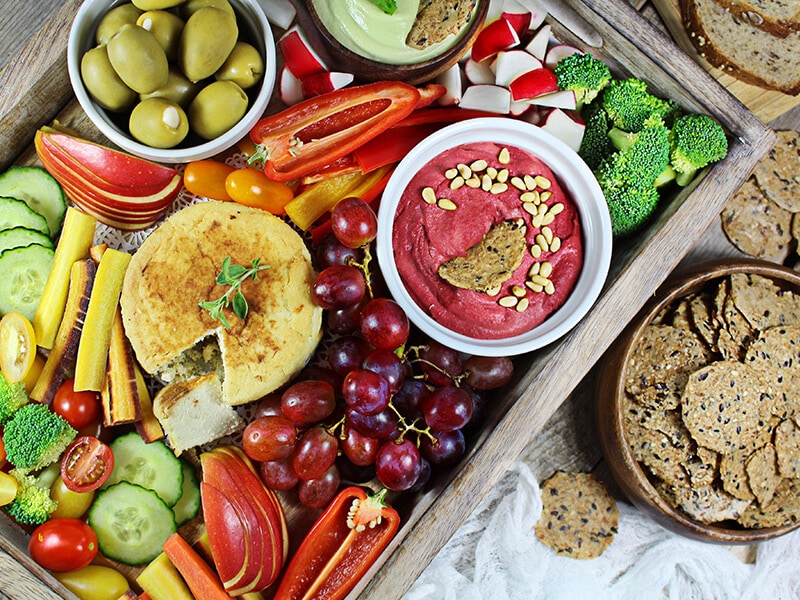
Charcuterie Boards Vs. Cheese Boards
Their names say it all: the difference lies in the ingredients. A cheese board presents a selection of cheeses and their complementary foods. Meanwhile, a charcuterie board highlights an assemblage of cured meats with other accompaniments.
In modern kitchens, they have become identical terms to explain concepts of various dried foods on the same plate. Cured meat can be an accouterment on the cheese board and vice versa. But technically, these two are different since they have distinct focuses.
Do you want to build a perfect cheese board? Check this out!
Everything You Need To Know To Make A Charcuterie Board
Before making any food, getting proper knowledge about its required elements is important, and building a charcuterie board is no different. Below is a detailed breakdown of the best ingredients and utensils you will need for this French dish.
Ingredients For Charcuterie Board – Choose Them Wisely
The fun and the art of charcuterie arrangement is that there are no compulsories for a fixed type of meat or cheese on the board. Feel free to mix and match the flavor combos you want. Below are some of the best choices that are worth your consideration.
The Best Meats To Use
This dish is about meat since that’s where its name comes from. Thus, they need to be the brightest star of your tray. Common choices are salami, ham, prosciutto, pate, and pepperoni.
More interestingly, make your guest’s jaw drop with the presence of lard (rendered pork fat). A little fat can go a long way and adds a hint of creaminess to your platter. Cutting lard into thin slices and combining them with crackers or toast will pamper your guest’s taste buds.
Anyways, choose whichever types you like best. Make sure to have at least two different kinds of meats on the board. Ideally, the more meat varieties there are, the better.
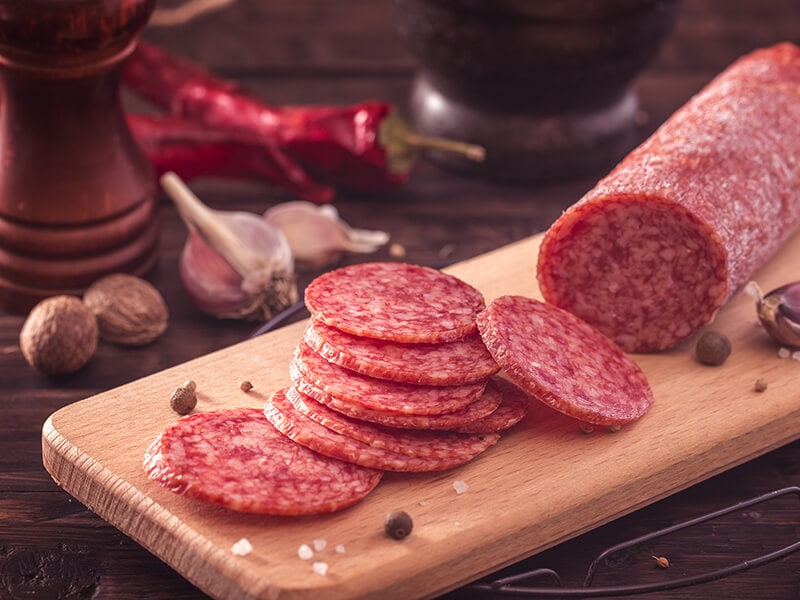
The Best Cheese To Put On Charcuterie Board
The category of cheese options is based on their texture, ranging from soft and semi-soft to firm. Make use of this point to add more complexity to your charcuterie board. Don’t restrict yourself to one type of cheese on the plate; entertain your guests with different varieties.
Soft varieties like camembert, a vegan cheese, are great with salami or prosciutto. Meanwhile, the creaminess of brie is perfectly harmonized with the spreadable texture of pate. For firmer cheese options, give the stage for the saltiness of Roquefort and cheddar.
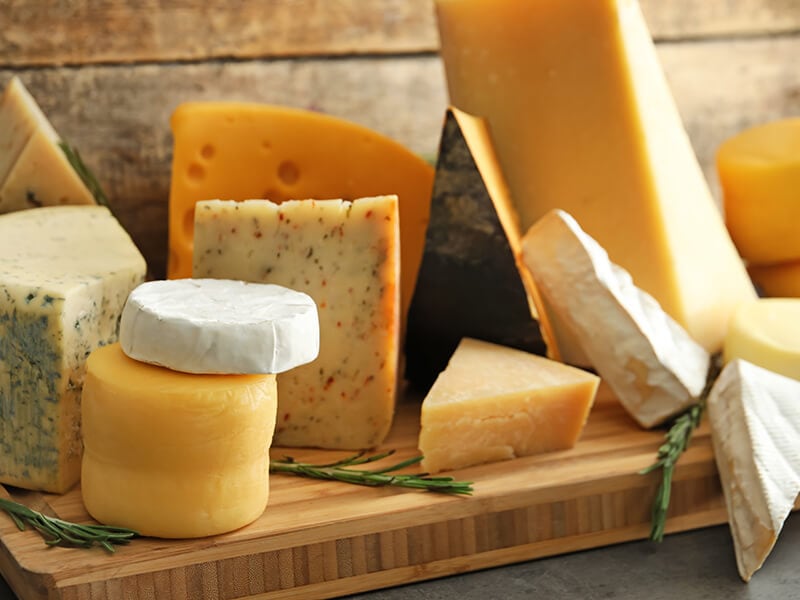
How To Choose Bites For Stacking And Spreading
Crackers and bread are the bridges to balance out the overall flavors and improve the meat and cheese. To get it right, think about the shapes and sizes of crackers so they can fit right on your board. Next, choose the ones that can complement your cheese best.
Water crackers, crostini, herb crackers, and baguettes are standard options that can go with most platters. But if you tend to make perfect pairings, note that breadsticks should go hand in hand with prosciutto, while buttery crackers are the ultimate choice for cheddar cheese.
In vegan versions, you’re welcome to switch crackers and other bread to fresh vegetables. Celery and cucumbers are great for dipping with sauce and hummus, while broccoli adds more crunchiness to the overall texture.
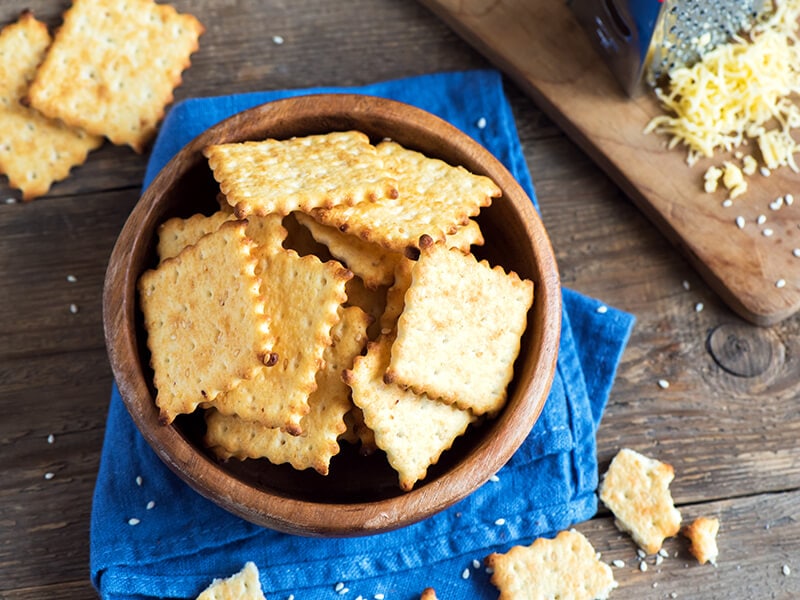
Put Your Mind On The Wine Selections!
Though varying in flavors and texture, all the items of a charcuterie board work together like a close chain, where one has great influences on another. In the wine case, two ingredients impacting the choices of alcohol are cured meat and cheese.
The right bottle of wine should have higher acidity to balance salty cured meat. Simultaneously, it needs to go well with the cheese. For example, lighter-bodied wine like sparling or white should pair with soft cheese, while full-bodied ones fit more for sharp or aged cheese.
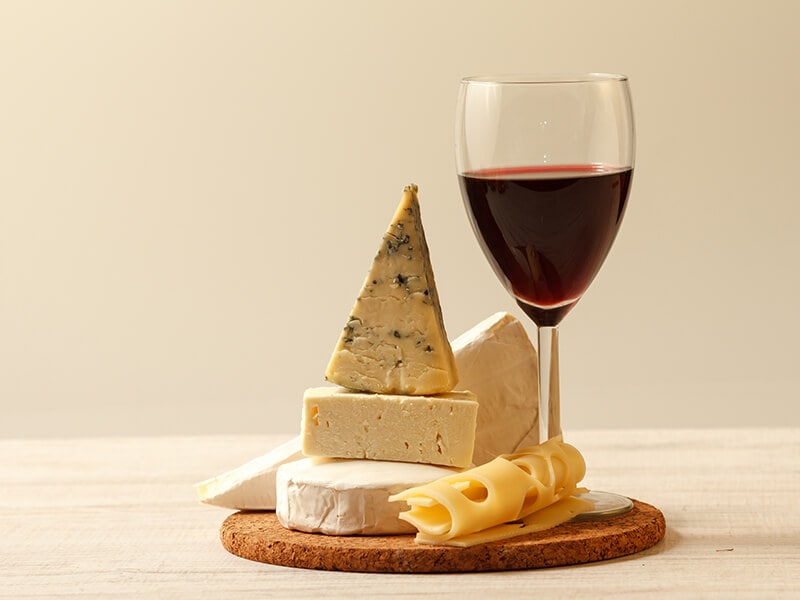
Charcuterie Board Utensils – Just Use What You Need
One of the most fantastic things about this French delicacy is that no special equipment is required during the making. Cutting is the only labor work, so cleaning is much simpler. Other utensils are unnecessary besides a spoon, which you may use for scooping out pate.
However, things may get more complicated when it comes to serving, especially for strict guests. Different ingredients need different serving tools like knives for cheese, forks for pickles or olives, toothpicks for skewering food, and spoons for items like honey or jams.
Moreover, for liquid items like spread, dips, or sauce, you should place them in containers. They add more touches to the overall appearance, too, so pick cute ones. Keep in mind that don’t take the oversize ones so all the items can be at the same level of attention.
Not every item needs a separate tool since that would be too much. For example, you don’t need three knives for three different types of cheese. Yet, some ingredients won’t work well without the right utensils. Ensure you have enough clean utensils for the guest’s convenience.
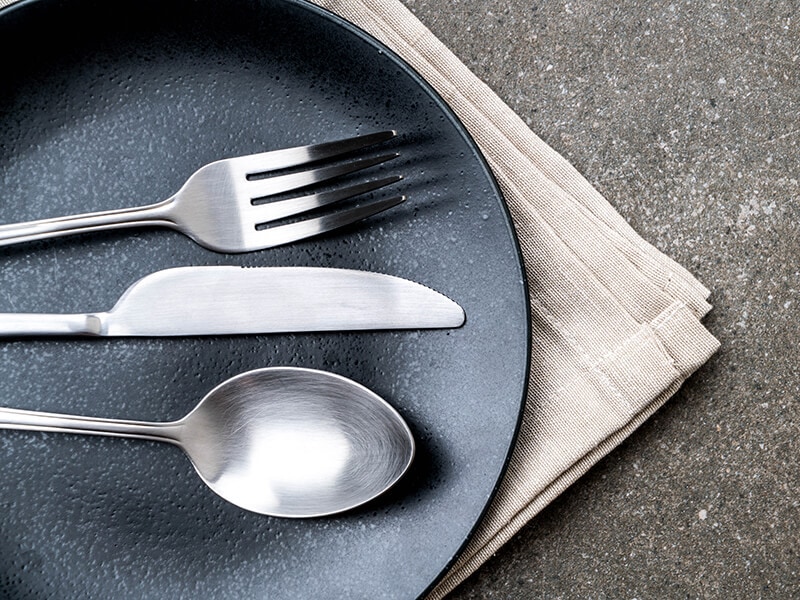
Learn How To Build A Fabulous Charcuterie Board
Building a charcuterie board can be done without special cooking skills, but having good taste is an advantage. Apart from the cured meat, you must also know where to arrange the supporting casts like cheese, crackers, spreads, and other elements. Without further ado, let’s start now!
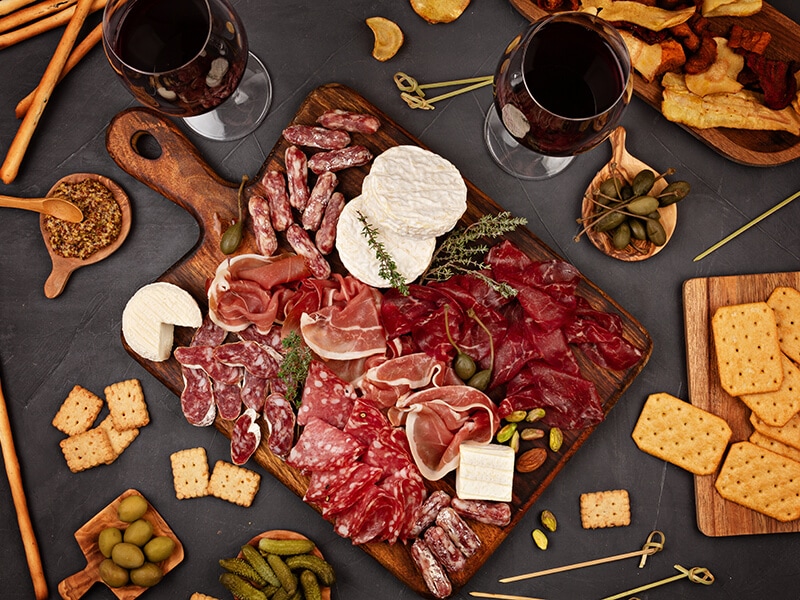
Step 1: Slice Ingredients
The first and foremost thing to do is cut the needed ingredients into bite sizes. Make sure all the pieces are the same size for a better presentation. Also, arrange seasoned vegetables, nuts, dip, and spread in suitable vessels or bowls.
Step 2: Create A Basic Structure
Bowls or containers take up bigger spaces and are hard to be removed afterward. Therefore, it’s best to let them take first place on the tray. This way, arranging more minor ingredients to fill the blank spaces is easier.
Step 3: Here Comes The Cheese
Since you will use several types of cheese, arrange them evenly around the board. Go with odd numbers like 3, 5, or 7 kinds of cheese based on the number of your guests.
Step 4: Add The Meat
More straightforwardly, you just need to add piles of meat slices next to the cheese. However, if you’re into an aesthetic look, spend extra time folding the meat in half or spreading them like card fanning. Better yet, turn thin slices of meat into ribbons for extra visual effect.
Step 5: Bring On The Crackers
Fill two or three stacks of sliced bread and crackers among the empty spaces of meats, cheeses, and bowls. Spread them randomly because a bit messy is still acceptable. Remember to use more than one type of cracker for more diversity.
Step 6: Let The Accompaniments Fill The Blank Spaces
Look for the remaining gaps and fill them with sweet and savory accompaniments. Place the bright-colored items next to the darker-colored ones for exciting color contrast. Also, let foods that pair well together stand next to each other.
Follow this expert, and she’ll show you how to arrange a drop-dead gorgeous charcuterie board.
Charcuterie Boards – Goods Or Bad?
Vegan versions aside, cured meat and cheese are two major bad sources for your body if consumed extensively. Moreover, consuming several ingredients can introduce a large amount of calories to your body.
Since prepared meats have to go through the salt curing process, they often contain high amounts of sodium. Unfortunately, large doses of sodium hinder high risks of heart disease, hypertension, and kidney problems (3).
That is the same case for cheese because it is also a powerhouse of sodium. Too much cheese intake can create significant damage to your body. Like cured meat, salt acts as a preservative in the cheese formula.
On the bright side, a moderate intake of cured meat is a great boost of protein, B vitamins, irons, and potassium. Similarly, cheese is healthy in moderation as its properties of calcium, protein, and vitamins benefit your bones and heart health.
In conclusion, a charcuterie board should not be on your daily diet, and it’s better to consume it once in a while. Devouring it occasionally won’t create significant change in your health.
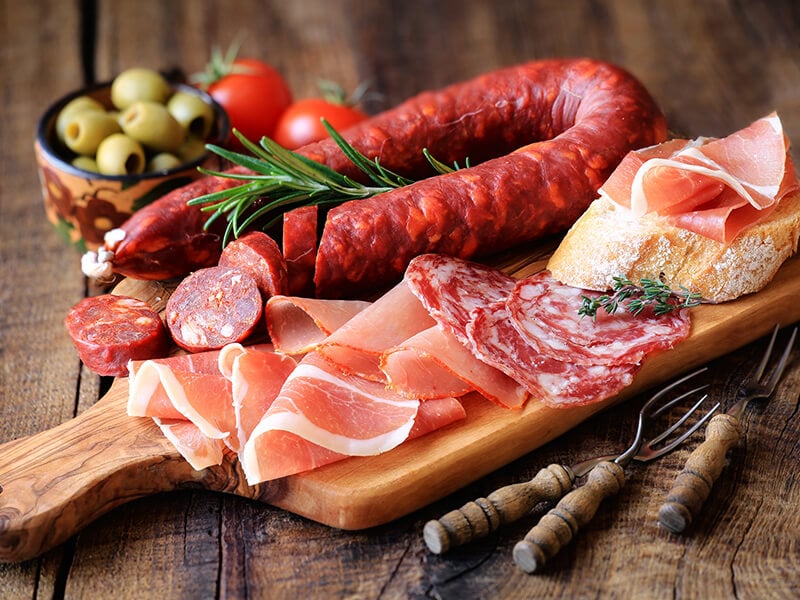
Tips To Make Charcuterie Boards
It’s unnecessary to spend a fortune on your charcuterie board. Makers can get the same artful visual effect with an affordable budget, so read carefully some tips below:
- Understanding your guest’s taste buds may be wise before building this snack board. A plate full of your guest’s low-priced favorite toppings is better than a bunch of expensive condiments that don’t trigger their taste buds.
- Be adventurous with colors. The bright-colored fruits like apples, strawberries, or grapes will make the trays more eye-catching. Seasonal fruits will have better prices, so remember to take advantage of this point.
- Last but not least, have a quick scan of your pantry and fridge before making any purchase. Charcuterie boards are an excellent way to have a makeover of some forgotten items in your kitchen.
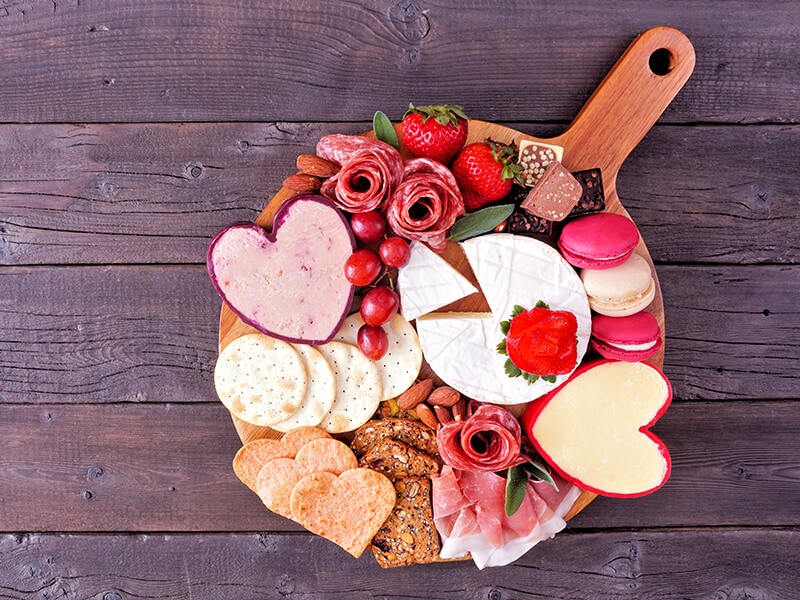
FAQs
The information above must have covered the basic knowledge to build a perfect charcuterie board. But for those who still want to know about this culinary art, the following questions may include just what you need.
Be An Artist With Your Charcuterie Board!
A charcuterie board is a culinary art where you freely showcase your creativity with ingredients. Go and give this appetizer a touch of your personality! But be ready because you might get a lot of questions about the plate presentation and flavors.
My advice is that you should have some taste-test pairings beforehand. Therefore, you can offer suggestions when the guests ask. The best thing about a charcuterie board is they are full of unexpected combinations that will blow your mind, so be prepared for surprises.
If you have successfully built a gorgeous charcuterie board, please share your result with other readers and me in the comments. Also, introduce this article to your friends who plan to make a snack board for holiday feasts. That’s all for today. Let’s meet up next time! See you!
References
- Champion, C. (2019) Food preservation in the nineteenth century, IUB Libraries Blog. Indiana University Bloomington
- Chang, P.by S. (2021) Back to basics: All about MyPlate food groups, USDA. United States Department of Agriculture.
- G, R.E.K.N.P. (no date) Role of sodium intake in the progression of chronic kidney disease, Journal of renal nutrition: the official journal of the Council on Renal Nutrition of the National Kidney Foundation. U.S. National Library of Medicine.

